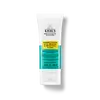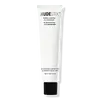What's inside
What's inside
 Key Ingredients
Key Ingredients

 Benefits
Benefits

 Concerns
Concerns

 Ingredients Side-by-side
Ingredients Side-by-side

Water
Skin ConditioningGlycerin
HumectantButylene Glycol
HumectantNiacinamide
SmoothingDimethicone
EmollientCetearyl Alcohol
EmollientIsohexadecane
EmollientSodium Hydroxide
BufferingAmmonium Polyacryloyldimethyl Taurate
Emulsion StabilisingLaureth-4
EmulsifyingPolyacrylate Crosspolymer-6
Emulsion StabilisingPropylene Glycol
HumectantDipotassium Glycyrrhizate
HumectantHydroxyethylcellulose
Emulsion StabilisingDimethiconol
EmollientTrisodium Ethylenediamine Disuccinate
Zinc PCA
HumectantGlyceryl Stearate
EmollientPEG-100 Stearate
Silica Silylate
EmollientHydroxypropyl Starch Phosphate
Maltodextrin
AbsorbentMenthol
MaskingLactobacillus Ferment
Skin ConditioningSalvia Officinalis Leaf Extract
CleansingChamomilla Recutita Flower Extract
MaskingSalicylic Acid 1.2%
MaskingWater, Glycerin, Butylene Glycol, Niacinamide, Dimethicone, Cetearyl Alcohol, Isohexadecane, Sodium Hydroxide, Ammonium Polyacryloyldimethyl Taurate, Laureth-4, Polyacrylate Crosspolymer-6, Propylene Glycol, Dipotassium Glycyrrhizate, Hydroxyethylcellulose, Dimethiconol, Trisodium Ethylenediamine Disuccinate, Zinc PCA, Glyceryl Stearate, PEG-100 Stearate, Silica Silylate, Hydroxypropyl Starch Phosphate, Maltodextrin, Menthol, Lactobacillus Ferment, Salvia Officinalis Leaf Extract, Chamomilla Recutita Flower Extract, Salicylic Acid 1.2%
Water
Skin ConditioningPropanediol
SolventIsoamyl Laurate
EmollientGlycerin
HumectantNiacinamide
SmoothingSalicylic Acid
MaskingSqualane
Emollient3-O-Ethyl Ascorbic Acid
Skin ConditioningPolyacrylate Crosspolymer-6
Emulsion StabilisingSilica
AbrasiveSodium Hydroxide
Buffering1,2-Hexanediol
Skin ConditioningCaprylyl Glycol
EmollientSodium PCA
HumectantXanthan Gum
EmulsifyingMelaleuca Alternifolia Leaf Oil
AntioxidantSodium Phytate
Centella Asiatica Extract
CleansingAzelamidopropyl Dimethyl Amine
AntimicrobialPlatycarya Strobilacea Extract
Skin ConditioningPsoralea Corylifolia Fruit Extract
Skin ConditioningSophora Flavescens Root Extract
AntioxidantPhenoxyethanol
PreservativeButylene Glycol
HumectantSodium Hyaluronate
HumectantSaccharide Isomerate
HumectantAcetyl Glutamine
Skin ConditioningLecithin
EmollientBacillus/Folic Acid Ferment Filtrate Extract
AntioxidantActinidia Chinensis Fruit Extract
EmollientSh-Oligopeptide-1
Skin ConditioningSh-Oligopeptide-2
Skin ConditioningSh-Polypeptide-1
Skin ConditioningSh-Polypeptide-11
Sh-Polypeptide-9
Skin ConditioningLimonene
PerfumingWater, Propanediol, Isoamyl Laurate, Glycerin, Niacinamide, Salicylic Acid, Squalane, 3-O-Ethyl Ascorbic Acid, Polyacrylate Crosspolymer-6, Silica, Sodium Hydroxide, 1,2-Hexanediol, Caprylyl Glycol, Sodium PCA, Xanthan Gum, Melaleuca Alternifolia Leaf Oil, Sodium Phytate, Centella Asiatica Extract, Azelamidopropyl Dimethyl Amine, Platycarya Strobilacea Extract, Psoralea Corylifolia Fruit Extract, Sophora Flavescens Root Extract, Phenoxyethanol, Butylene Glycol, Sodium Hyaluronate, Saccharide Isomerate, Acetyl Glutamine, Lecithin, Bacillus/Folic Acid Ferment Filtrate Extract, Actinidia Chinensis Fruit Extract, Sh-Oligopeptide-1, Sh-Oligopeptide-2, Sh-Polypeptide-1, Sh-Polypeptide-11, Sh-Polypeptide-9, Limonene
 Reviews
Reviews

Ingredients Explained
These ingredients are found in both products.
Ingredients higher up in an ingredient list are typically present in a larger amount.
Butylene Glycol (or BG) is used within cosmetic products for a few different reasons:
Overall, Butylene Glycol is a safe and well-rounded ingredient that works well with other ingredients.
Though this ingredient works well with most skin types, some people with sensitive skin may experience a reaction such as allergic rashes, closed comedones, or itchiness.
Learn more about Butylene GlycolGlycerin is already naturally found in your skin. It helps moisturize and protect your skin.
A study from 2016 found glycerin to be more effective as a humectant than AHAs and hyaluronic acid.
As a humectant, it helps the skin stay hydrated by pulling moisture to your skin. The low molecular weight of glycerin allows it to pull moisture into the deeper layers of your skin.
Hydrated skin improves your skin barrier; Your skin barrier helps protect against irritants and bacteria.
Glycerin has also been found to have antimicrobial and antiviral properties. Due to these properties, glycerin is often used in wound and burn treatments.
In cosmetics, glycerin is usually derived from plants such as soybean or palm. However, it can also be sourced from animals, such as tallow or animal fat.
This ingredient is organic, colorless, odorless, and non-toxic.
Glycerin is the name for this ingredient in American English. British English uses Glycerol/Glycerine.
Learn more about GlycerinNiacinamide is a multitasking form of vitamin B3 that strengthens the skin barrier, reduces pores and dark spots, regulates oil, and improves signs of aging.
And the best part? It's gentle and well-tolerated by most skin types, including sensitive and reactive skin.
You might have heard of "niacin flush", or the reddening of skin that causes itchiness. Niacinamide has not been found to cause this.
In very rare cases, some individuals may not be able to tolerate niacinamide at all or experience an allergic reaction to it.
If you are experiencing flaking, irritation, and dryness with this ingredient, be sure to double check all your products as this ingredient can be found in all categories of skincare.
When incorporating niacinamide into your routine, look out for concentration amounts. Typically, 5% niacinamide provides benefits such as fading dark spots. However, if you have sensitive skin, it is better to begin with a smaller concentration.
When you apply niacinamide to your skin, your body converts it into nicotinamide adenine dinucleotide (NAD). NAD is an essential coenzyme that is already found in your cells as "fuel" and powers countless biological processes.
In your skin, NAD helps repair cell damage, produce new healthy cells, support collagen production, strengthen the skin barrier, and fight environmental stressors (like UV and pollution).
Our natural NAD levels start to decline with age, leading to slower skin repair, visible aging, and a weaker skin barrier. By providing your skin niacinamide, you're recharging your skin's NAD levels. This leads to stronger, healthier, and younger looking skin.
Another name for vitamin B3 is nicotinamide. This vitamin is water-soluble and our bodies don't store it. We obtain Vitamin B3 from either food or skincare. Meat, fish, wheat, yeast, and leafy greens contain vitamin B3.
The type of niacinamide used in skincare is synthetically created.
Learn more about NiacinamidePolyacrylate Crosspolymer-6 is a texture enhancer and pH adjuster.
It is be used to thicken water-based products and create a gel-texture with a velvet feel.
One manufacturer claims this ingredient to have a pH range of 2-8 and to be biodegradable.
Learn more about Polyacrylate Crosspolymer-6Salicylic Acid (also known as beta hydroxy acid or BHA) is a well-known ingredient for treating skin that struggles with acne and clogged pores. It exfoliates both the skin's surface and deep within the pores to help clear out buildup, control oil, and reduce inflammation.
Unlike AHAs (alpha hydroxy acids), salicylic acid is oil-soluble. This allows it to penetrate into pores which makes it especially effective for treating blackheads and preventing future breakouts.
Salicylic acid is also known for its soothing properties. It has a similar structure to aspirin and can calm inflamed or irritated skin, making it a good option for acne-prone skin that is also sensitive.
Concentrations of 0.5-2% are recognized by the U.S. FDA as an over-the-counter topical acne product.
It can cause irritation and/or dryness if one's skin already has a compromised moisture barrier, so it's best to focus on repairing that before introducing this ingredient into your routine.
While salicylic acid does not increase sun sensitivity, it’s still important to wear sunscreen daily to protect your skin.
If you are looking for the ingredient called BHA or Butylated Hydroxyanisole, click here.
Learn more about Salicylic AcidSodium Hydroxide is also known as lye or caustic soda. It is used to adjust the pH of products; many ingredients require a specific pH to be effective.
In small amounts, sodium hydroxide is considered safe to use. However, large amounts may cause chemical burns due to its high alkaline.
Your skin has a natural pH and acid mantle. This acid mantle helps prevent harmful bacteria from breaking through. The acid mantle also helps keep your skin hydrated.
"Alkaline" refers to a high pH level. A low pH level would be considered acidic.
Learn more about Sodium HydroxideWater. It's the most common cosmetic ingredient of all. You'll usually see it at the top of ingredient lists, meaning that it makes up the largest part of the product.
So why is it so popular? Water most often acts as a solvent - this means that it helps dissolve other ingredients into the formulation.
You'll also recognize water as that liquid we all need to stay alive. If you see this, drink a glass of water. Stay hydrated!
Learn more about Water